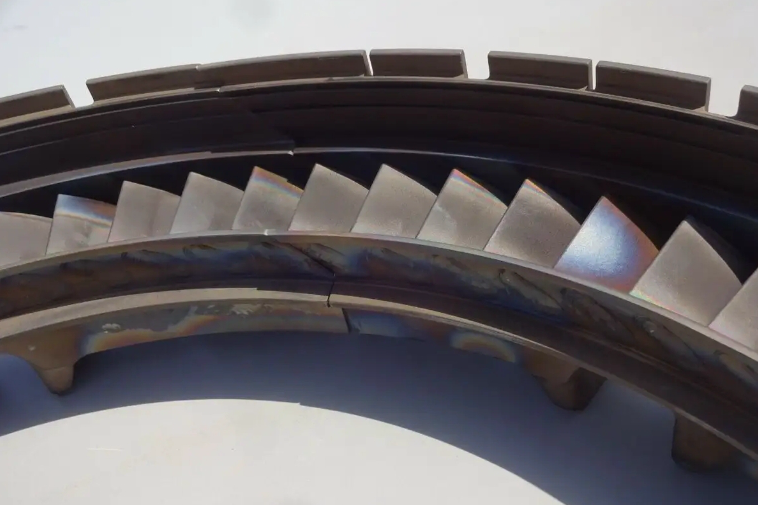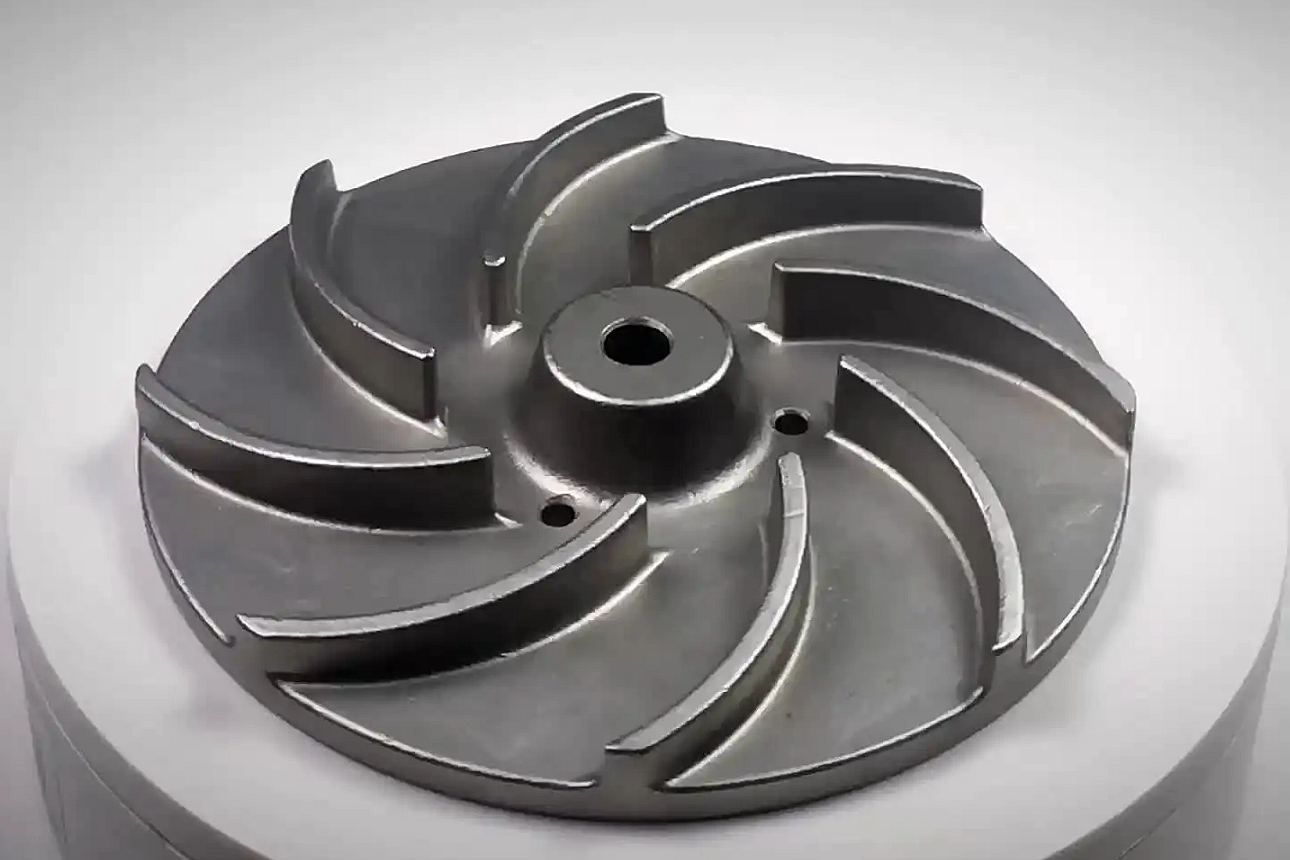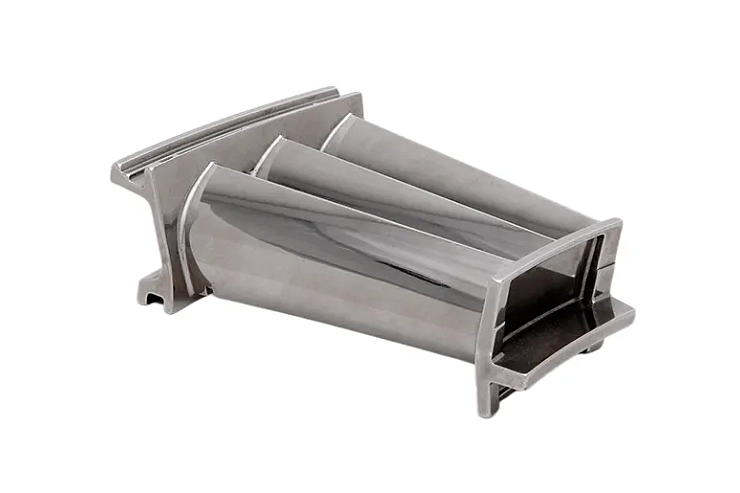Automated Operation in Core Removal: Boosting Productivity for Custom Superalloy Manufacturing
In the highly competitive landscape of manufacturing, automation has become a cornerstone for improving productivity and consistency. Core removal, a critical step in custom superalloy manufacturing, is increasingly adopting automated solutions to address challenges such as intricate geometries, stringent tolerances, and efficiency. Automation in core removal accelerates production cycles and ensures higher precision and repeatability than manual methods.
This shift toward automated processes is especially crucial for superalloy components, often used in high-performance industries like aerospace, energy, and defense. These sectors demand components that meet exacting durability standards, heat resistance, and mechanical strength. Automation helps manufacturers overcome the limitations of traditional core removal methods while addressing the challenges posed by complex part designs.

Manufacturing Process for Custom Superalloy Components
Custom superalloy manufacturing involves advanced casting and forging techniques designed to produce components capable of withstanding extreme conditions. Methods such as investment casting, directional casting, and single-crystal casting are widely employed to achieve the precision and performance required in aerospace and power generation industries.
In these processes, cores create hollow sections or complex internal geometries within the part. These cores are typically made from ceramic or salt materials, selected for their stability during high-temperature casting and ease of removal during post-processing. Ceramic core technologies are preferred for components with intricate and high-strength requirements, while salt cores offer advantages in applications requiring simpler removal processes.
Automated core removal is seamlessly integrated into this manufacturing workflow, leveraging technologies such as robotics, intelligent sensors, and AI-driven systems. These tools ensure that the core removal process is precise and consistent, minimizing the risk of damage to the casting while improving throughput. Automated core removal systems enhance repeatability and reduce human intervention in this critical stage.
Automation also allows for real-time monitoring of core removal efficiency, enabling immediate adjustments to optimize performance. This level of integration not only boosts productivity but also enhances the overall quality of the final product. Advanced process monitoring technologies ensure the reliability of the core removal step, supporting the production of defect-free custom superalloy components.
Typical Superalloys Used in Automated Manufacturing
Superalloys are engineered materials designed to maintain their strength and integrity under extreme temperature, pressure, and environmental stress conditions. These materials are widely used in industries that demand high-performance components.
Nickel-Based Superalloys
Nickel-based superalloys, such as Inconel 718, CMSX-4, and Rene N6, are the most commonly used due to their exceptional resistance to heat and oxidation. These materials are ideal for applications in the aerospace and energy sectors, where components must endure prolonged exposure to high temperatures.
Cobalt-Based Superalloys
Cobalt-based superalloys, like Stellite 21 and Stellite 6B, are preferred for their wear resistance and durability. These alloys are suitable for applications in harsh environments, such as valve seats, bearings, and components exposed to mechanical wear and erosion.
Titanium-Based Alloys
Titanium-based alloys, such as Ti-6Al-4V and Ti-5Al-5V-5Mo-3Cr, are used for their lightweight and corrosion-resistant properties, making them valuable in the aerospace and automotive industries. Their excellent strength-to-weight ratio makes them highly suitable for parts requiring strength and reduced mass.
Automated Core Removal Benefits
Automated core removal is particularly beneficial for these materials, as their hardness and resistance to deformation make manual processes more challenging and time-consuming. Automation ensures that these high-performance materials are handled with precision and care, preserving their integrity and functionality while minimizing the risk of defects that could affect their performance in service.
Post-Process Comparison: Automated vs. Manual Core Removal
The choice of core removal method can significantly impact productivity, precision, and overall manufacturing costs. A comparison between automated and manual techniques highlights the advantages of automation in modern superalloy manufacturing.
Automated Core Removal
Automated core removal systems utilize advanced techniques such as robotic chemical leaching, ultrasonic vibration, and automated abrasive blasting to remove cores. These methods offer unparalleled precision and repeatability, preserving complex geometries without compromising the part's integrity. Automation also reduces the risk of human error, making it ideal for high-volume production. Additionally, safety is enhanced, particularly in processes involving hazardous chemicals or high temperatures, as operators are not directly exposed to these environments.
The initial investment in automated systems can be high. Still, the long-term benefits of efficiency, consistency, and scalability make it a cost-effective solution for many manufacturers seeking to improve overall production quality and throughput.
Manual Core Removal
Manual core removal relies on traditional techniques such as chemical immersion, mechanical vibration, and abrasive blasting performed by skilled operators. While these methods are adaptable to many projects, they are often slower and less precise than automated solutions. Manual processes are also more labor-intensive and carry a higher risk of damage to the part, particularly for intricate or delicate components. Despite these limitations, manual core removal remains a viable option for small-scale or highly specialized projects where automation may need to be more practical.
The comparison between automated and manual core removal underscores the advantages of automation for improving productivity, consistency, and safety in superalloy manufacturing. By reducing variability and minimizing the potential for damage, automation contributes significantly to surface quality enhancement and the overall reliability of high-performance components.
Testing and Quality Assurance in Automated Core Removal
Quality assurance is critical in ensuring that core removal processes meet the required standards for precision and reliability. Automated systems improve the efficiency of core removal and enhance the accuracy and consistency of testing and inspection.
In-Line Inspection Systems
Automated core removal systems often integrate in-line inspection technologies such as X-ray and computed tomography (CT) scanning. These methods provide real-time feedback on the removal process, detecting residual core material or internal defects that could compromise the part's performance. Ultrasonic testing is also employed to verify the completeness of core removal in components with complex internal structures.
Dimensional Accuracy Checks
Automated tools like coordinate measuring machines (CMM) and 3D scanning systems are used to assess the dimensional accuracy of the casting. These technologies ensure that the part conforms to its design specifications, reducing the need for rework or adjustments.
Material Integrity Analysis
Material analysis methods, including scanning electron microscopy (SEM) and metallographic microscopy, are integrated into automated workflows to monitor the microstructural integrity of the part. These tests help identify any damage caused during the core removal process, such as cracks or changes in surface roughness.
Advanced AI-Based Predictive Models
Advanced AI-based predictive models further enhance quality assurance by analyzing data from the core removal process and flagging potential issues before they become critical. This proactive approach ensures that every component meets the highest quality and performance standards.
Industry Applications of Automated Core Removal
Adopting automated core removal is transforming the production of superalloy components across various industries. By enhancing efficiency, precision, and consistency, automated systems ensure that components meet the rigorous performance requirements set by various sectors.
Aerospace and Aviation
In the aerospace and aviation sectors, automated systems manufacture components such as turbine blades, combustion chambers, and other jet engine parts. These components require intricate geometries and exceptional precision to ensure optimal performance under extreme temperatures and stresses. Automated core removal is critical to achieving the consistent quality required in jet engine components, ensuring improved efficiency and safety in flight operations.
Power Generation
The power generation industry benefits from automated core removal in producing gas turbine vanes, reactor components, and heat exchangers. Automation enables manufacturers to achieve the high throughput and consistency needed for large-scale energy projects. The precision offered by automated systems ensures that components like reactor vessel parts meet the tight tolerances required for reliable and efficient energy generation.
Oil and Gas
Automated core removal is essential for producing durable pump components, containment systems, and heat-resistant piping in the oil and gas industry. These components are exposed to harsh environments, including high temperatures, corrosive substances, and extreme pressures. Automated processes ensure the consistent precision needed for the reliable operation of these components in critical oil extraction and transportation operations.
Automotive
Automotive manufacturers leverage automated systems to accelerate the production of advanced brake systems, exhaust components, and other high-performance parts. Automation ensures these components meet stringent safety and performance standards while maintaining cost efficiency. Automated core removal is instrumental in creating intricate internal geometries that enhance performance, such as heat dissipation in exhaust components and precise braking capabilities.
Chemical and Pharmaceutical Processing
The chemical and pharmaceutical processing industries rely on automated core removal to produce sterilization equipment, heat exchangers, and corrosion-resistant parts. The precision and consistency provided by automated core removal processes are vital for maintaining compliance with industry regulations. High-quality parts ensure safety and efficiency in processing environments, where exposure to corrosive chemicals and extreme temperatures is expected.
Military and Defense
In the military and defense sectors, automated core removal supports the production of components such as missile parts, armor systems, and naval parts. These applications demand components with unmatched reliability and durability, which can only be achieved through precise and controlled manufacturing processes. Automated core removal plays a key role in ensuring that parts such as missile segments are manufactured to withstand extreme forces and conditions while meeting stringent military specifications.
Conclusion
Across these industries, automated core removal is revolutionizing the manufacturing of superalloy components by increasing efficiency, reducing waste, and ensuring superior precision. The ability to produce intricate, high-quality parts consistently enables manufacturers to meet the growing demands of modern technology while maintaining competitiveness in high-stakes industries. Whether achieving the precise tolerances required in aerospace turbine blades or ensuring the durability of armor components for defense applications, automated core removal is becoming a cornerstone of advanced superalloy manufacturing processes.
FAQs
How does automation improve the efficiency of core removal in superalloy manufacturing?
What are the key differences between robotic chemical leaching and manual leaching?
Why are nickel-based superalloys commonly used in automated core removal processes?
What testing methods are integrated into automated core removal systems?
Which industries benefit the most from adopting automated core removal techniques?



